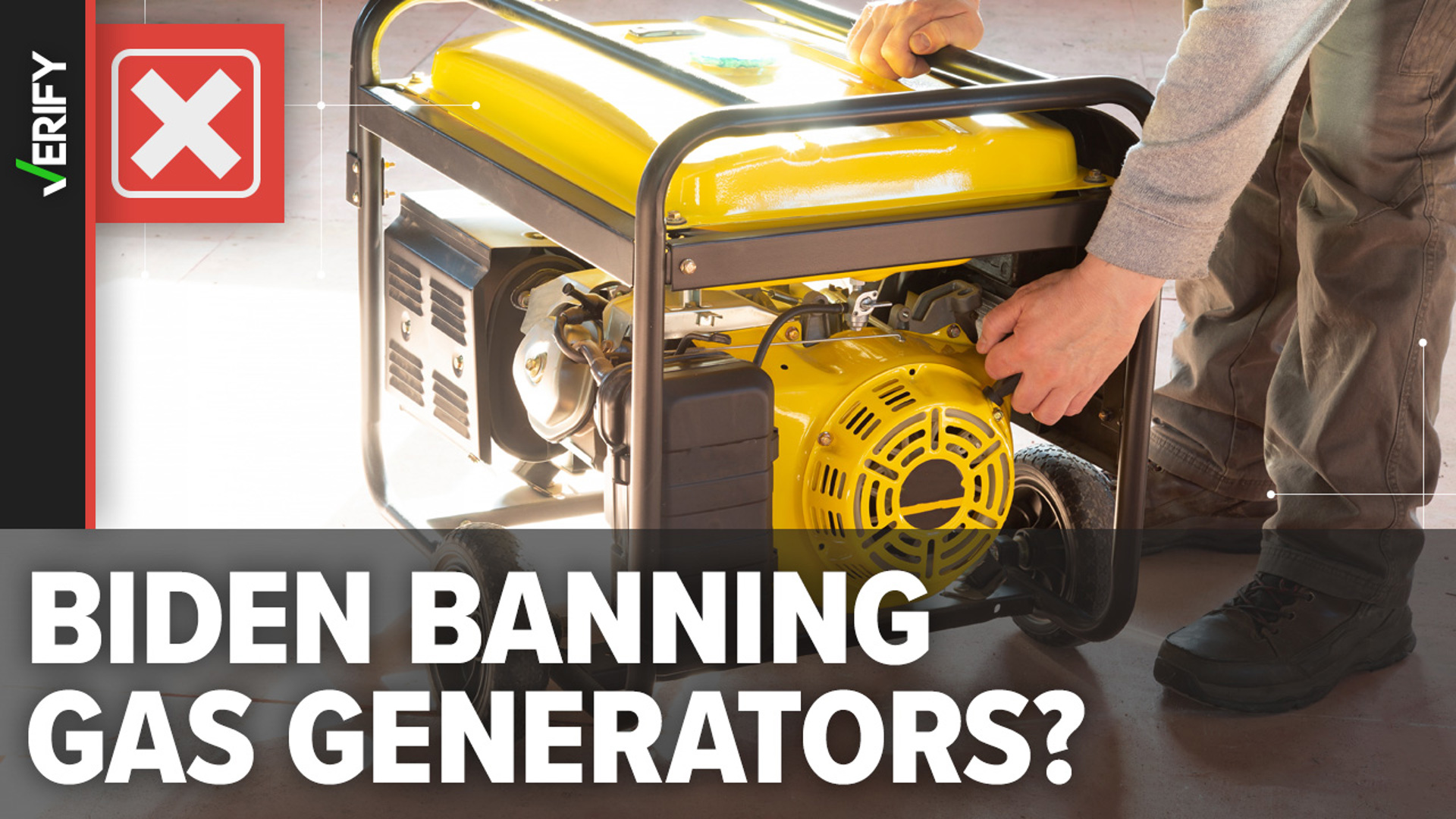Many people prepare for severe weather such as snowstorms, severe thunderstorms and hurricanes by buying a portable gas-powered generator to use in case of a power outage.
Those generators can be lifesavers for some, but can also be deadly for others. Since 2010, portable generators have caused 796 deaths related to carbon monoxide poisoning.
Over the past year, several headlines and social media posts have claimed that the Biden administration wants to ban portable gas-powered generators.
THE QUESTION
Is the Biden administration banning portable gas-powered generators?
THE SOURCES
- U.S. Federal Register
- U.S. Consumer Product Safety Commission (CPSC)
- Portable Generator Manufacturers’ Association (PGMA)
- UL Solutions, which created one of two voluntary standards for the portable generator industry
- Ashley Rodrigue, director of public affairs at the Louisiana Office of State Fire Marshal
THE ANSWER
No, the Biden administration is not banning portable gas-powered generators.
WHAT WE FOUND
In response to numerous carbon monoxide poisoning deaths and injuries caused by portable gas-powered generators, the U.S. Consumer Product Safety Commission (CPSC) proposed a rule in March 2023 that would regulate the carbon monoxide emissions and auto-shutoff sensitivity of new portable gas-powered generators.
The CPSC is an independent federal agency tasked with regulating consumer product safety.
This regulation would not ban portable gas-powered generators, but would instead require manufacturers to meet new standards when manufacturing portable generators. The rule combines two preexisting industry standards that portable generator manufacturers can currently voluntarily follow.
There is no current set date when the rule would go into effect, but the CPSC says its staff are working on the next step of the proposal.
As written, it would not apply to generators currently in homes or on store shelves.
Carbon monoxide is a toxic gas that is odorless and colorless, often referred to as a “silent killer” because of its ability to cause harm while going unnoticed, the CPSC says.
A portable gas-powered generator can produce as much carbon monoxide as 100 cars lined up side-by-side, according to Ashley Rodrigue, director of public affairs at the Louisiana Office of State Fire Marshal. That amount of carbon monoxide can quickly become dangerous if the generator is left in a space like a garage, even with the door open.
“It can seep into your home through door cracks, window cracks, any kind of opening into your attic, which can then spread across your home,” Rodrigue said. “It's a very dangerous situation that can develop very quickly. This is not something that is going to happen over days, this is over hours. And it can be as quick — depending upon where that generator is placed, and how big it is — it can be as quick as three hours.”
The rule would require portable gas-powered generator manufacturers to include a carbon monoxide sensor that automatically shuts off the generator when it detects certain levels of carbon monoxide around it. It would also require manufacturers to limit the carbon monoxide emissions produced by their generators.
The CPSC proposed the rule to try to reduce carbon monoxide deaths and injuries caused by portable generators. Generators caused 92 of the 211 non-fire carbon monoxide poisoning deaths from consumer products in 2020, the most of any product category, according to the CPSC.
Currently, portable gas-powered generator manufacturers can voluntarily abide by two different industry standards. The standard most commonly followed by the manufacturers is the PGMA standard, which requires generators to include a carbon monoxide detector that automatically shuts the generator off. The other standard, the UL standard, not only requires the sensor and automatic shut-off feature, but also limits the amount of carbon monoxide a generator can produce.
According to the Portable Generator Manufacturers’ Association (PGMA), the rule could temporarily cause a shortage of portable generators if it were to go through.
However, the PGMA says there are no portable generators currently on the market that would meet the CPSC’s proposed regulations.
The PGMA claims that over 75% of generators available on the market have the carbon monoxide detection and shut-off required for the PGMA standard, and expects compliance to grow 85% within the next year. CPSC staff, on the other hand, estimated that only about 30% of generators are compliant with the PGMA standard.
“There are currently no generators in the market that comply with the requirements of the proposed rule,” the PGMA said. “The 180-day effective date required by the rule is not enough time for manufacturers to redesign, re-develop, test, and bring new generators to market.”
The PGMA updated its voluntary standards in December 2023 to require the carbon monoxide sensor to shut off the generator at a lower level of carbon monoxide. The updated standards do not limit the amount of carbon monoxide a generator can produce.
The CPSC’s notice of proposed rulemaking notes that it cannot legally issue a rule if there are already voluntary standards adopted by the industry, unless the CPSC finds the standards don’t adequately “eliminate or reduce an unreasonable risk of injury” from a product or believes significant compliance with the voluntary standard is unlikely.
The rule has not been adopted or finalized since it was first proposed in March 2023.

